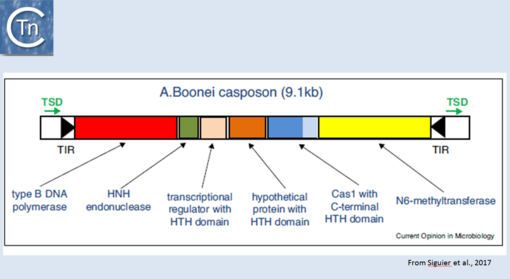Difference between revisions of "General Information/The casposases"
| Line 7: | Line 7: | ||
{{Reflist|32em}} | {{Reflist|32em}} | ||
| − | {{ | + | {{Extremophile}} |
| + | {{Taxonbar|from=Q131238}} | ||
| + | {{Authority control}} | ||
Revision as of 21:05, 20 March 2022
The casposases
More recently, TE related to CRISPRs, Casposons have been identified[1] and a reassement of their ends has led to the identification of an 14-15 bp target duplication [2]. Moreover, the purified Cas1 enzyme encoded by these ancestral transposons has been demonstrated to catalyse strand transfer of a pre-cleaved transposon in vitro but does not appear to promote transposon strand cleavage in this assay[3]. Cas1 "casposases" use similar chemistry to that used by the CRISPR Cas1-Cas2 complex but with opposite substrate specificities since CRISPR Cas1-Cas2 integrates "random" sequences into a specific site in the CRISPR locus whereas casposases integrate a specific site (the casposon ends) into random target sequences (Fig.24.1).

Bibliography
- ↑ Krupovic M, Makarova KS, Forterre P, Prangishvili D, Koonin EV . Casposons: a new superfamily of self-synthesizing DNA transposons at the origin of prokaryotic CRISPR-Cas immunity. - BMC Biol: 2014 May 19, 12;36 [PubMed:24884953] [DOI]
- ↑ Hickman AB, Dyda F . CRISPR-Cas immunity and mobile DNA: a new superfamily of DNA transposons encoding a Cas1 endonuclease. - Mob DNA: 2014, 5;23 [PubMed:25180049] [DOI]
- ↑
Template:Extremophile Template:Taxonbar Template:Authority control